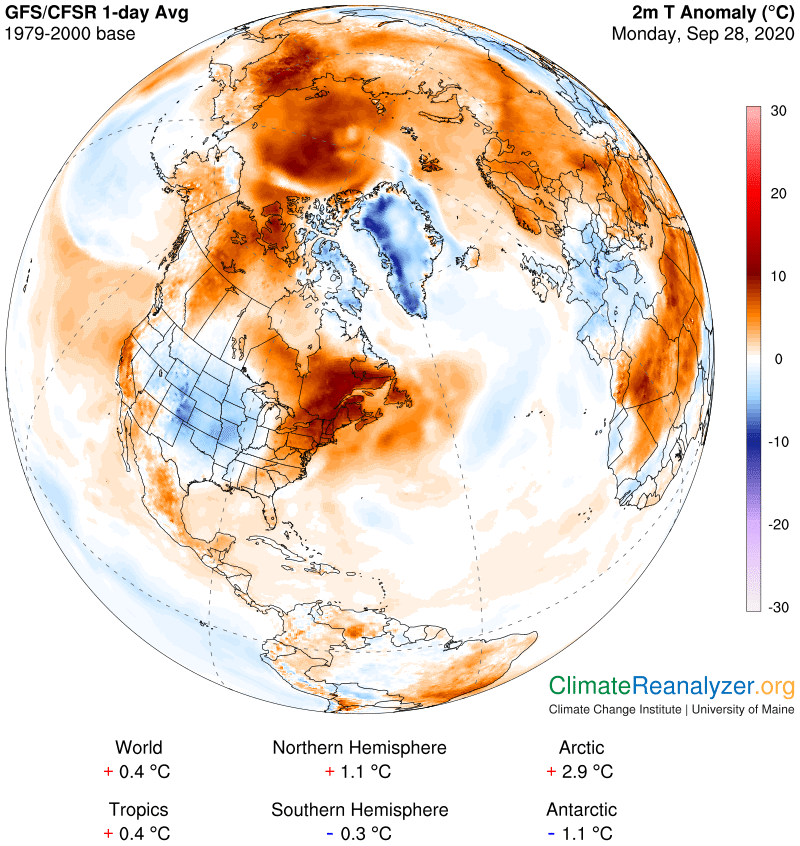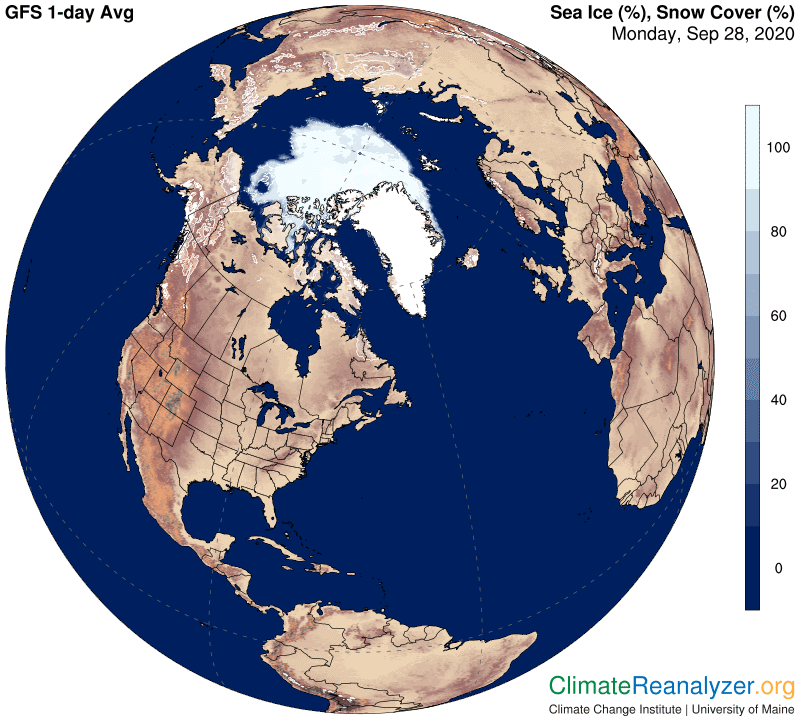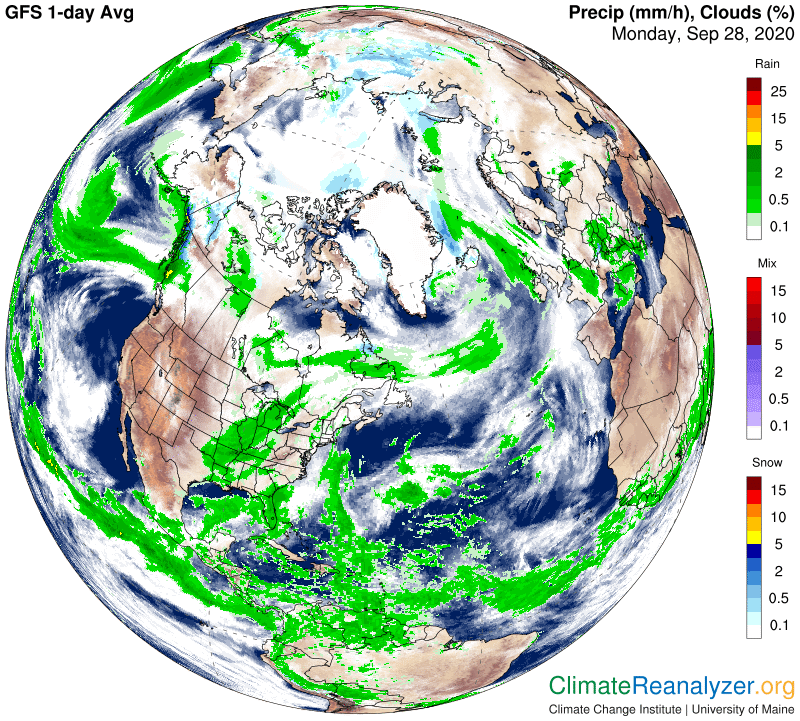What would happen if the Arctic Ocean were to lose all of its sea ice? The trend in that direction is certainly underway, and for a quick update of relevant data you are invited to visit this site: https://ads.nipr.ac.jp/vishop/#/extent/&time=2019-04-01%2000:00:00. The rate of decline in the September minimum since the 1990s, if it continues, would bring the annual low down to almost zero within three decades, and a similar outcome starting earlier in July would not be far behind. September’s results for this year and last suggest that the trend may indeed be accelerating.
Three researchers at Scripps Institute of Oceanography – UC San Diego published a study in June, 2019, describing the potential consequences for climate of a complete loss of Arctic sea ice, which was not widely publicized and still does not have open access. (The lead author was a graduate student, backed up by two veteran scientists.) A normal PR summary of the main conclusions of the study was not released by the university until July of this year, which I just learned about. It can be read at this link: https://scripps.ucsd.edu/news/research-highlight-loss-arctics-reflective-sea-ice-will-advance-global-warming-25-years and I recommend that you do so for a plausible representation of what the authors call a “worst-case scenario.”
Questions have been raised about what effect the loss of sea ice would have on future cloud cover in the Arctic. Thick cloud cover will reflect sunlight in much the same way that sea ice does, and losses of sea ice are widely expected to produce a new source of evaporation from surface waters that could contribute to additional cloud formation. Here is what the authors considered in making their calculations: “For the baseline calculations, the authors assumed that cloud cover would remain constant. However, they calculate that if the loss of the Arctic ice is accompanied by complete loss of cloud cover, the total added warming could be three times greater.” That made me wonder about whether current Weather Maps would have anything of related interest to reveal, with all the anomalous warming that is going on these days, and they do. To start with, look at how today’s anomaly covers practically every bit of the ocean, including a large area of warming in a range of +6 to 10C:

Now notice how a good bit of the warmest part of the anomaly sits directly over the remains of this year’s sea ice while a similar part is over an adjacent spread of open water. The actual air temperature above the open water is in fact a little warmer than the air just above the ice, which is quite understandable, but that does not seem to affect any of the relative anomaly sizes:

The next image, showing cloud cover, is the most startling of all. The entire ocean today has only a few patches of modest size free of clouds, and none of these coincide with the principal area of ice coverage. It’s only one day we are looking at, but the message is clear enough. If all that ice were to magically disappear at this moment there could not be more cloud cover than there is now, which is most likely close to maximum, but conceivably there could be less! Also, the clouds that are presently in place are not doing much to offset whatever is causing the very large warming effect that is presently in place. Solar radiation is not very great at this time and the clouds are surely having no trouble keeping most of it from reaching the surface. Clouds do have a greenhouse effect of their own to consider, and clouds do not block any of the greenhouse effect produced by incoming streams of water vapor higher in the atmosphere. This whole situation is something to keep an eye on in the future.

Carl